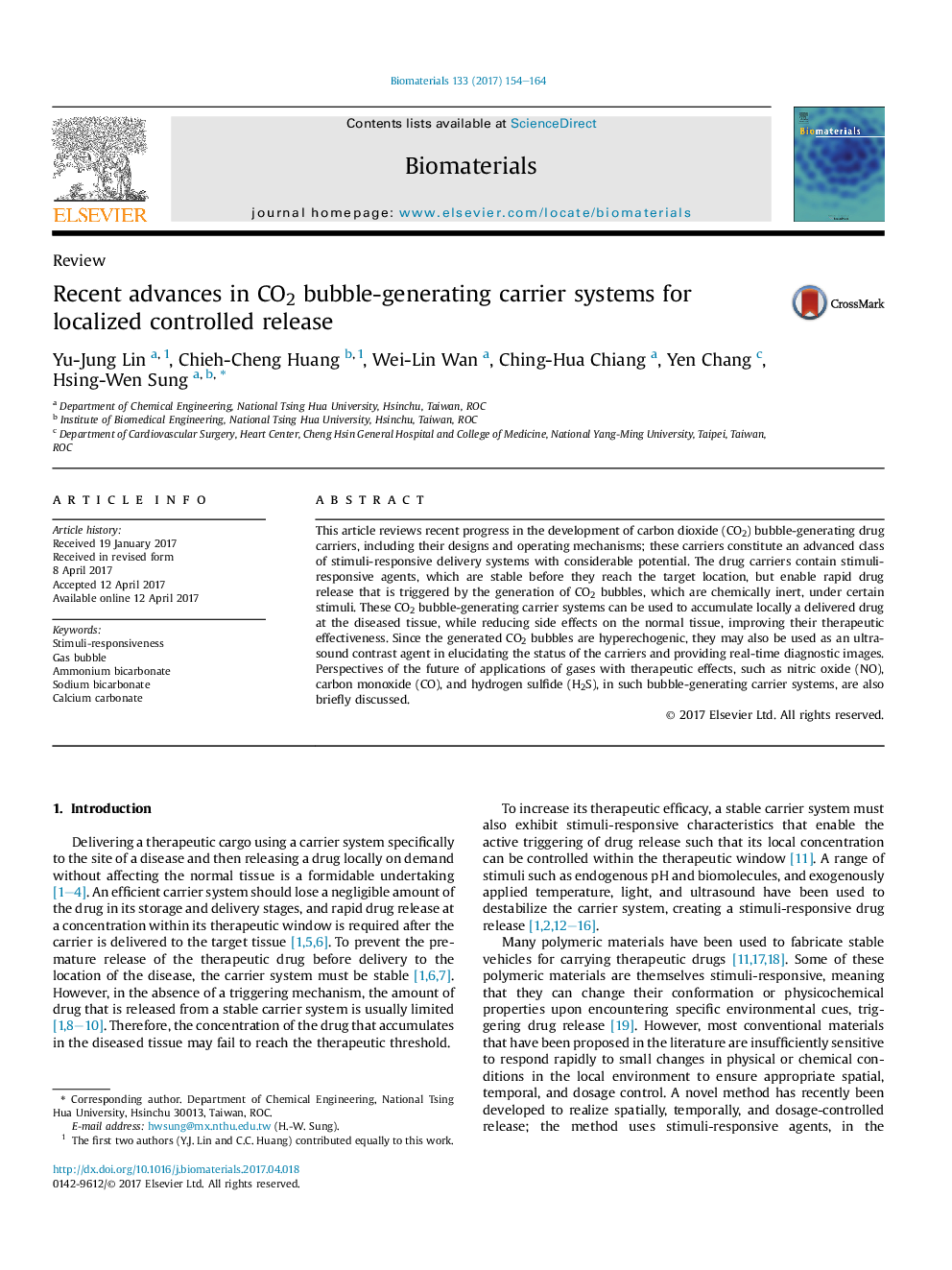| Article ID | Journal | Published Year | Pages | File Type |
|---|---|---|---|---|
| 4752373 | Biomaterials | 2017 | 11 Pages |
This article reviews recent progress in the development of carbon dioxide (CO2) bubble-generating drug carriers, including their designs and operating mechanisms; these carriers constitute an advanced class of stimuli-responsive delivery systems with considerable potential. The drug carriers contain stimuli-responsive agents, which are stable before they reach the target location, but enable rapid drug release that is triggered by the generation of CO2 bubbles, which are chemically inert, under certain stimuli. These CO2 bubble-generating carrier systems can be used to accumulate locally a delivered drug at the diseased tissue, while reducing side effects on the normal tissue, improving their therapeutic effectiveness. Since the generated CO2 bubbles are hyperechogenic, they may also be used as an ultrasound contrast agent in elucidating the status of the carriers and providing real-time diagnostic images. Perspectives of the future of applications of gases with therapeutic effects, such as nitric oxide (NO), carbon monoxide (CO), and hydrogen sulfide (H2S), in such bubble-generating carrier systems, are also briefly discussed.
